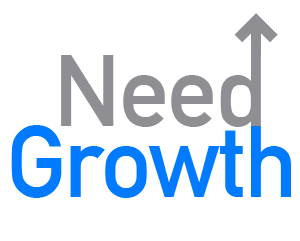Product Hunt is blowing up. The popular platform that allows users to hunt products just recently raised $6.1 Million and are working their way up as one of the fastest growing startups seen.
Community plays an important part at product hunt: it is actually the community that hunts and adds new products to their platform, and it’s the community who up-votes the products they like. Each popular product is then a reflection of community interest.
I sat down with Nichole Elizabeth DeMeré, Product Hunt’s Community Manager, to discuss the place of content marketing in the uprising community of Product Hunt.
1. Product Hunt has been getting a lot of hype lately, and you guys raised $6.1M – congratulations! When did you join Product Hunt, how do you feel about working there and what does your job as a community manager include?
Thank you! I joined Product Hunt in August, so I’ve been on the team a little over four months. These four months make up a third of the time in which Product Hunt has been around, though! It’s easy to forget that.
We don’t have official titles, but as a “Community Manager,” I’m on the front lines answering most of the questions we receive about Product Hunt. This means I have the privilege of learning from (literally) everyone on the team because I have to know exactly how Product Hunt works, from our design and development, to our UX and UI, and how to assist users so that they’re successful with our product. That said, I’m excited to be here – it’s an incredible learning opportunity and I feel like I’m learning from the best.
The Product Hunt Team in Action
2. You were the Head of Content at Growth Hackers TV. How is being a past content manager helping you in your job as a community manager? How important is content for the rope of community managers?
From my experience, the roles of “Head of Content” vs. “Community Manager” are very different. In this case, the main similarity would be that each requires domain knowledge, an understanding of the “ideal customer”, and the ability to curate or moderate content based on both. At GHTV, I curated content posted on the site and throughout social media. At Product Hunt, I help monitor what’s posted by the community to ensure it matches our guidelines.
3. What are the types of content do you usually share with your community? How do you learn which topics would interest and engage your followers?
What’s unique about Product Hunt is that the community members are the content creators. People hunt products they think they will appreciate, and others up-vote those that they like.
Additionally, the Product Hunt team offers a podcast, daily newsletter, and collections (daily lists). Some of our daily lists such as the startup toolkit series, offer exclusive discounts for Product Hunters.
Measuring is important: We’re able to determine through analytics and success stories which topics engage our followers the most.
4. Do you use any tools for content discovery? Which is your favorite and why?
Twitter lists. They’re up-to-date and easy to segment. My Twitter lists are broken down into product categories, such as art, fashion, and film, and they’re a work in progress, so I’m continually updating them to add new sources. My goal is optimize Twitter lists until I’m able to hunt products every day in the most convenient way possible.
5. What are your top 2-3 tips for community managers to leverage content for increased engagement?
Know your community (i.e. know your ideal customer). What do they like? Who do they spend time with? What do they do for fun? Know everything about them – don’t just think in terms of demographics.
Delight your community. As Ryan recently commented, “There are a lot of ‘things’ you can do for growth but IMHO (in my humble opinion), it’s important makers continually ask, ‘How can we delight our community?’ and set that as the focal point for all decisions.”
And this one is cliché, but that’s because it’s true: figure out what works, and double down on it. Don’t waste time trying to make something work if it clearly isn’t. Move quickly.
Figure out what works, and double down on it. Don’t waste time trying to make something work if it clearly isn’t.
6. UGC (user generated content) is a great way to get your community involved. How are you encouraging your community to contribute?
Other than participating on the site (submitting products, commenting, etc.) members are encouraged to host / attend world-wide meetups and hackathons. Anyone anywhere can host a meetup and soon we’ll be sending care packages to hosts so that they have Glasshole Kitty stickers, t-shirts, and other items to provide to attendees. We also recently hosted a world-wide hackathon competition with over 700 participants (which was really just one big hangout for everyone to share cat gifs and eat pizza).
7. What is the one tool that as a community manager you couldn’t live without?
Slack. Currently we’re working with a remote team across seven time zones, and Slack allows us to easily communicate and to guarantee that our communication across all focuses is transparent.
What is Product Hunt? Dive Into This Roojoom To Learn More About This Amazing Startup:

